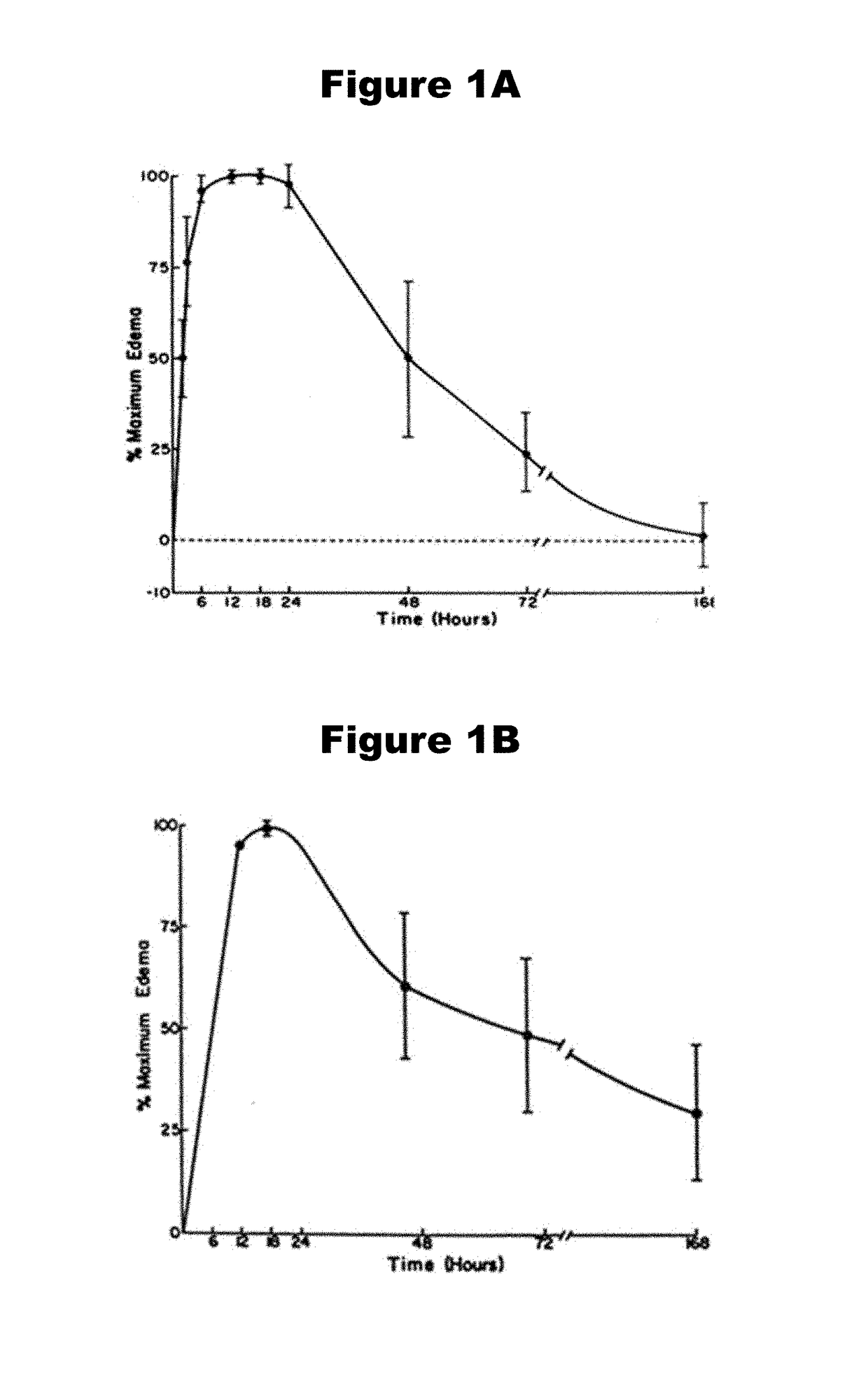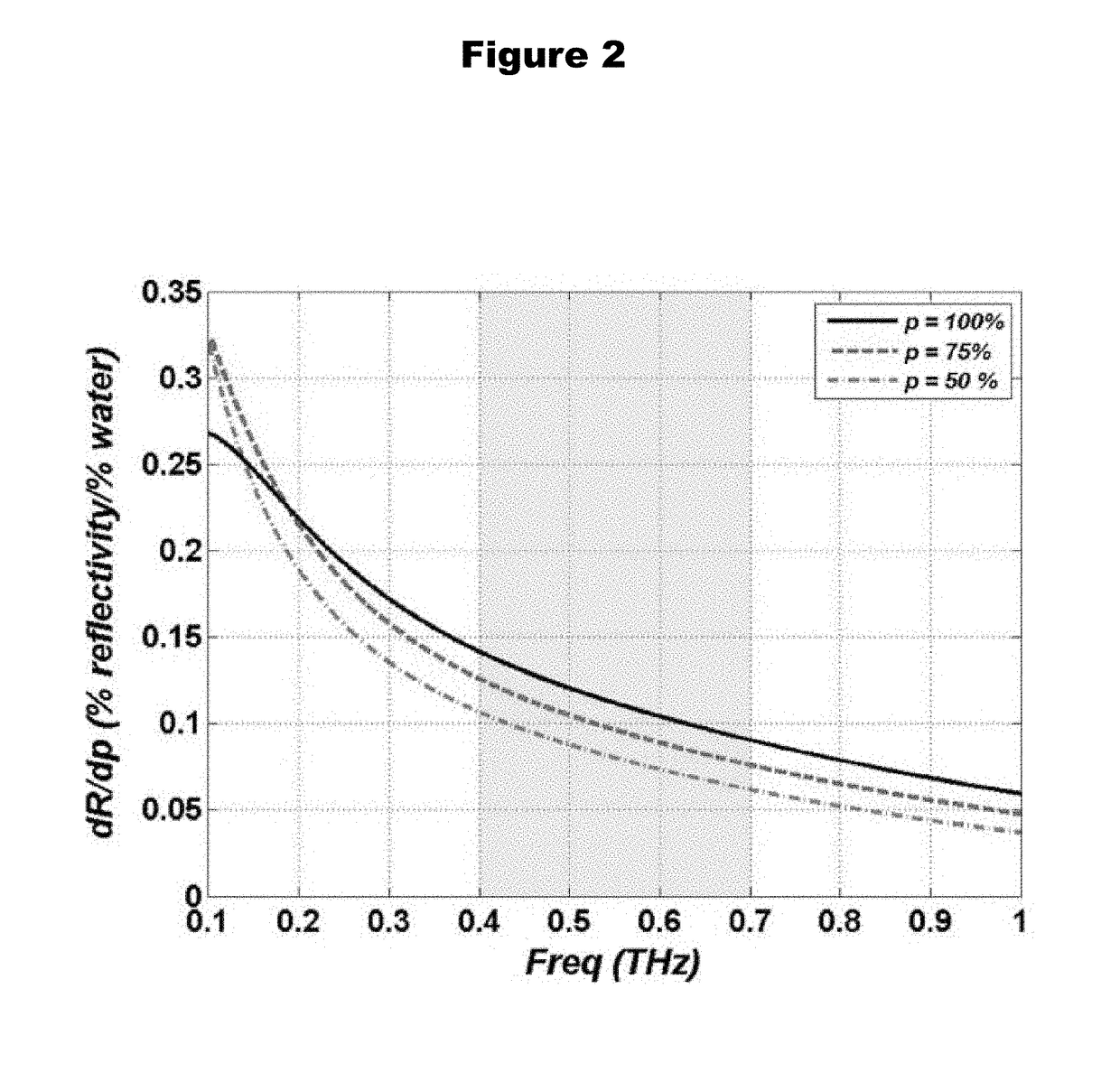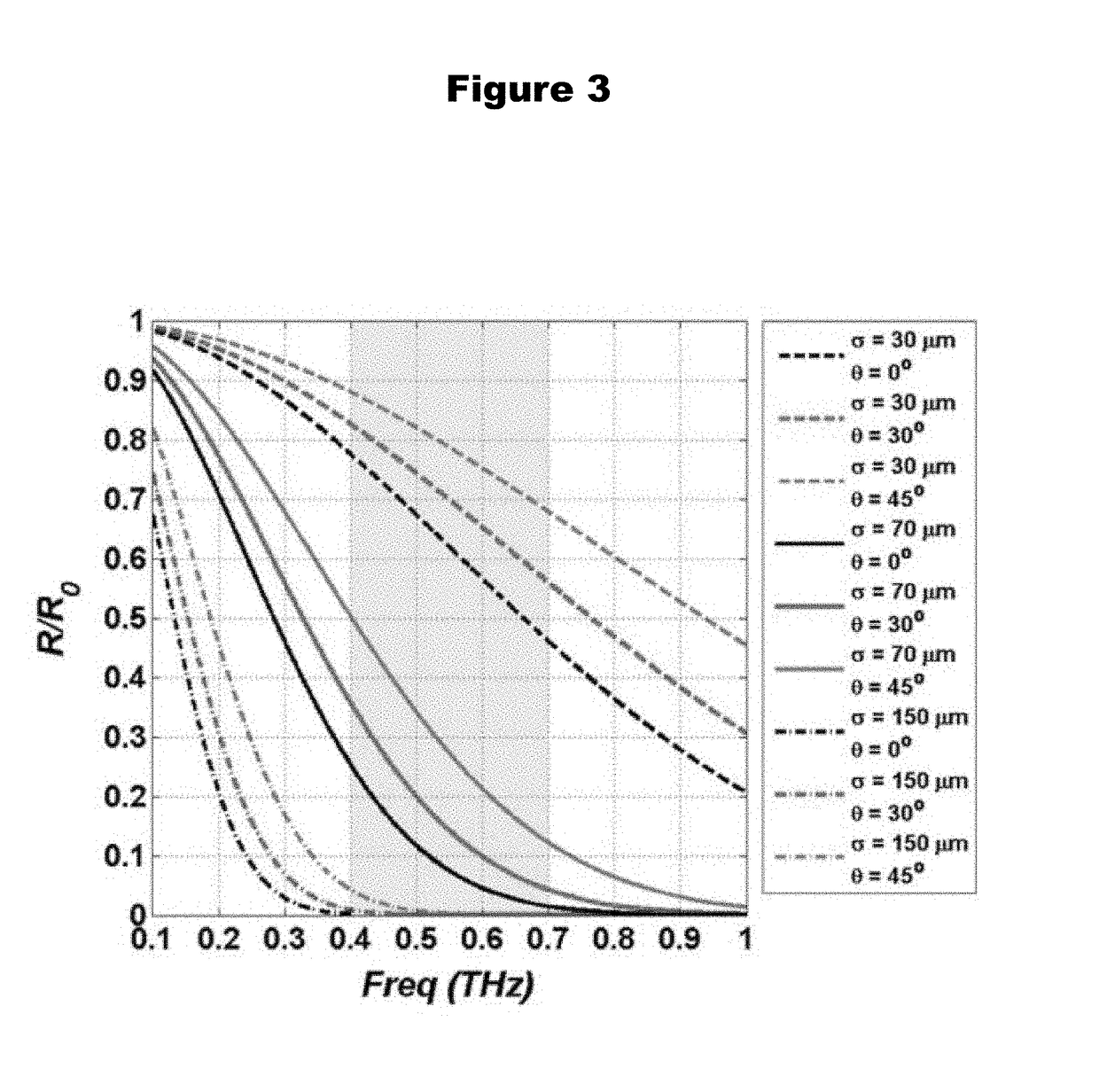Assessment of Wound Status and Tissue Viability via Analysis of Spatially Resolved THz Reflectometry Maps
a reflectometry and map technology, applied in the field of assessment of wound status and tissue viability via spatial resolution thz reflectometry map, can solve the problems of slow healing time, difficulty in distinguishing wounds or surgical tissue replacements, and serious public health problems of wounds, and achieve the effect of maximum reflectivity
- Summary
- Abstract
- Description
- Claims
- Application Information
AI Technical Summary
Benefits of technology
Problems solved by technology
Method used
Image
Examples
example 1
ng Burn Analysis
[0105]In many embodiments, methods and apparatus are provided that utilize THz tissue water content (TWC) mapping of burns to predict wound tissue viability and produce THz viability maps with the goal of improving burn wound outcome. The overarching goal of burn wound diagnostics is to rapidly distinguish tissues in the wound that are viable from those that are not. Such advancements in THz burn imaging translate to identification of key clinical outcomes, specifically which areas will heal spontaneously without medical intervention and which areas require debridement.
State of the Art Wound Imaging
[0106]Several burn wound imaging systems under investigation use optical technologies because, in general they provide spatially resolved burn wound assessment. These include vital dyes, polarization sensitive optical coherence tomography (PS-OCT), and thermal imaging. (See, e.g., J. E. Gatti, et al., J Trauma, vol. 23, pp. 202-6, March 1983; B. H. Park, et al., “J Biomed ...
example 2
gnetic Model and Expected Behavior of Burn Wounds
[0129]Various prior art has commented on the accuracy of using the double Debye model as a baseline and perturbing the relaxation time until the fit converges with the observed spectra (D. B. Bennett, et al., IEEE Sens. J., 11(5):1253-62, 2011; H. J. Liebe, G. A. Hufford, and T. Manabe, “Int. J. Infrared Millim. Waves, 12(7):659-75, 1991; E. Pickwell, et al., Appl. Phys. Lett., 84(12):2190-92, 2004; Z. D. Taylor, et al., IEEE Trans. Terahertz Sci. Technol., 5(2):170-83, 2015; A. Maccabi, et al., 8585:85850X-85850X-, 2013; the disclosures of which are incorporated herein by reference). Here, in accordance with various embodiments, it is proposed to employ effective media theory to compute tissue dielectric properties through the use of the estimated fill factor of water to tissue. When the tissue water content is changed by thermal insult and the subsequent physiologic response, the fill factor can be modified to compute the effective ...
example 3
vo Imaging in Pre-Clinical Rat Model
[0139]To test various embodiments of the invention, rats were used as an pre-clinical model for in vivo THz burn wound imaging (W. A. Dorsett-Martin, Wound Repair Regen., 12(6):591-99, 2004, the disclosure of which is incorporated herein by reference). Among the available burn wound parameters, skin thickness is most pertinent for understanding the wound depth as an aspect of wound healing. The thicknesses of rat and human skin layers are most similar compared to those of other animal skin (Table 3), and therefore rats are frequently used as cutaneous injury models (T. N. Meyer and A. L. da Silva, “Acta Cirúrgica Bras., 14(4):0-0, 1999; R. K. Cribbs, M. H. Luquette, and G. E. Besner, J. Surg. Res., 80(1):69-74, 1998; T. Kaufman, et al., Burns, 16(1):13-16, 1990; J. S. Knabl, et al., Burns, 25(3):229-35, 1999; the disclosures of which are incorporated herein by reference). In addition to the availability of a broad knowledge base on rat wound heali...
PUM
 Login to View More
Login to View More Abstract
Description
Claims
Application Information
 Login to View More
Login to View More - R&D
- Intellectual Property
- Life Sciences
- Materials
- Tech Scout
- Unparalleled Data Quality
- Higher Quality Content
- 60% Fewer Hallucinations
Browse by: Latest US Patents, China's latest patents, Technical Efficacy Thesaurus, Application Domain, Technology Topic, Popular Technical Reports.
© 2025 PatSnap. All rights reserved.Legal|Privacy policy|Modern Slavery Act Transparency Statement|Sitemap|About US| Contact US: help@patsnap.com



